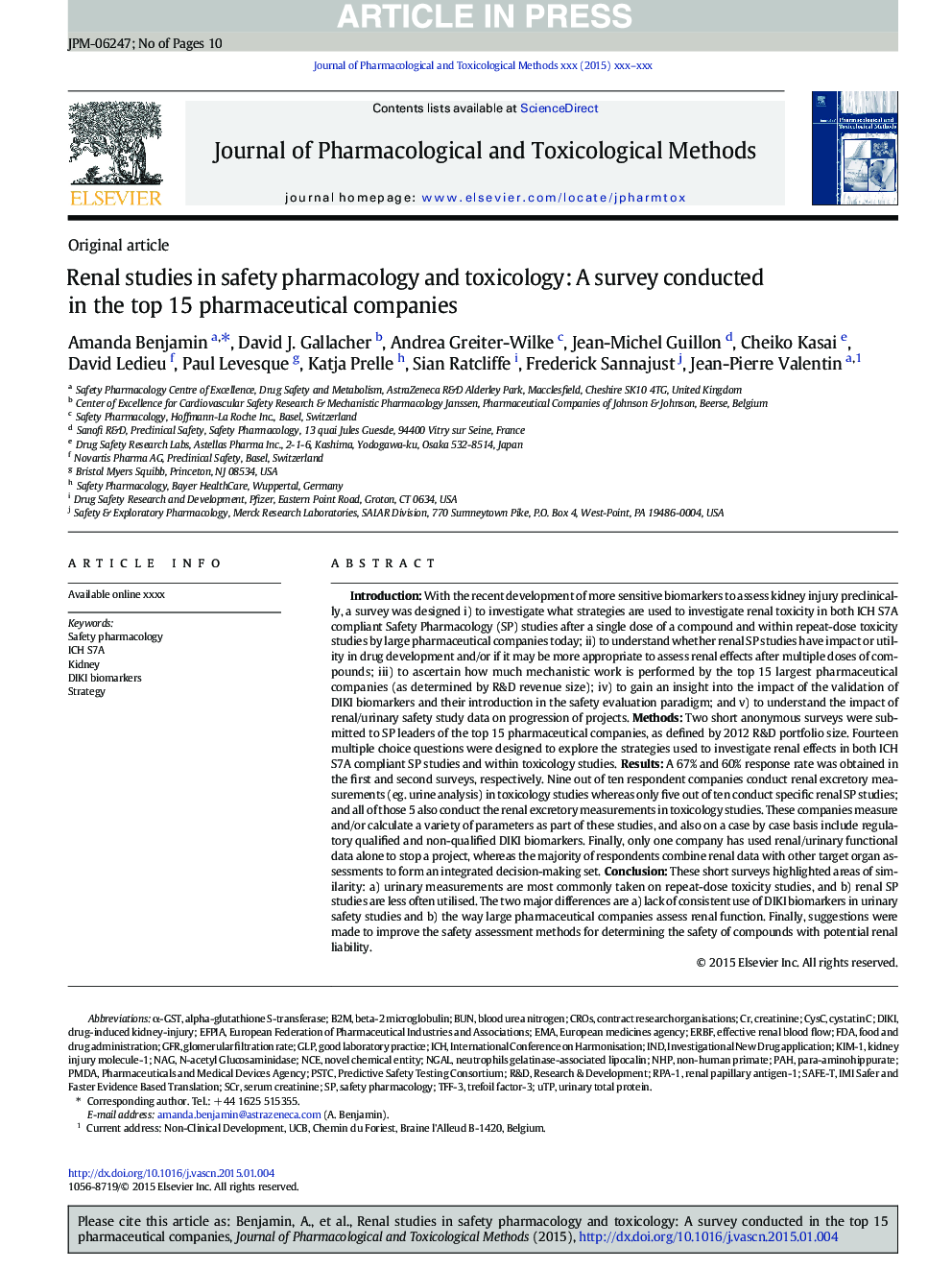| Article ID | Journal | Published Year | Pages | File Type |
|---|---|---|---|---|
| 5840458 | Journal of Pharmacological and Toxicological Methods | 2015 | 10 Pages |
Abstract
These short surveys highlighted areas of similarity: a) urinary measurements are most commonly taken on repeat-dose toxicity studies, and b) renal SP studies are less often utilised. The two major differences are a) lack of consistent use of DIKI biomarkers in urinary safety studies and b) the way large pharmaceutical companies assess renal function. Finally, suggestions were made to improve the safety assessment methods for determining the safety of compounds with potential renal liability.
Keywords
PSTCEFPIAN-acetyl glucosaminidaseICH S7Aα-GSTGLPPMDACrosb2mCysCNGALPAHGFRFDAUTPNHPpara-aminohippurateEMAKIM-1investigational new drug applicationNAGNCEEuropean Medicines agencyPharmaceuticals and Medical Devices AgencyStrategyindResearch & developmentR&DGood Laboratory PracticeBUNSafety pharmacologyFood and Drug AdministrationCystatin CICHKidney injury molecule-1Beta-2 microglobulinnon-human primateGlomerular filtration rateblood urea nitrogencreatinineserum creatinineKidneyInternational Conference on HarmonisationSCR
Related Topics
Health Sciences
Pharmacology, Toxicology and Pharmaceutical Science
Pharmacology
Authors
Amanda Benjamin, David J. Gallacher, Andrea Greiter-Wilke, Jean-Michel Guillon, Cheiko Kasai, David Ledieu, Paul Levesque, Katja Prelle, Sian Ratcliffe, Frederick Sannajust, Jean-Pierre Valentin,
